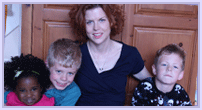Book Review: Colleges That Change Lives: 40 Schools That Will Change the Way You Think About College
 Colleges That Change Lives: 40 Schools That Will Change the Way You Think About College by Loren Pope
Colleges That Change Lives: 40 Schools That Will Change the Way You Think About College by Loren Pope
Publisher: Penguin Books
Release Date: 4th ed. edition, August 28, 2012
My rating: 5 of 5 stars
Choosing the right college has never been more important—or more difficult. For the latest edition of this classic college guide, Hilary Masell Oswald conducted her own tours of top schools and in-depth interviews, building on Loren Pope’s original to create a totally updated, more expansive work. Organized by geographic region, every profile includes a wealth of vital information, including admissions standards, distinguishing facts about the curriculum, extracurricular activities, and what faculty say about their jobs. Masell Oswald also offers a new chapter on how students with learning disabilities can find schools that fit their needs. For every prospective college student searching for more than football and frat parties, Colleges That Change Lives will prove indispensable.
Fully revised and updated by education journalist Hilary Oswald, Colleges That Change Lives remains the definitive guide for high school students (and their parents) who are looking for more in their college education than football, frat parties, and giant lectures. Building on the foundation of landmark author Loren Pope, Oswald spent more than a year visiting 40 colleges, speaking with students, faculty, and alumni to create these vivid and concise portraits.
Featuring a new introduction, a new Required Reading section, and a new chapter on learning disabilities, the book is organized into five geographic regions (Northeast, South, Midwest, Southwest, Northwest) to make for easy browsing, and urban, suburban, and rural campuses are all featured. There’s also an alphabetical index of colleges. Each profile includes admissions standards as well as relevant statistics to make your decision easier, including where the school ranks in post-graduate grants and fellowships, what percentage of students go on to graduate school or further education, distinguishing facts about the curriculum, percentage of professors who have terminal degrees in their field, even what activities are available to students and what they’re likely to do on weekends.
My oldest son will be starting his senior year of high school in the fall and has only recently shown an interest in choosing a college. Meanwhile, I’ve been freaking out about it since his sophomore year! One of my friends recommended this book to me. She and her son used it to choose his college a few years ago and he’s been really happy with his choice.
This book explores small liberal arts colleges that you may have never heard of but are still excellent schools. I went to a big state school (Go Mizzou!) so I didn’t know much about how liberal arts colleges worked before reading this book. The book is divided into sections by region – South, Midwest, etc. and there are a handful of colleges included for each. I liked that the write-up for each college was a narrative, not charts and graphs. The author includes quotes from both professors and students about their experiences with the school. I felt like it was a balanced view of the schools with both positives and negatives mentioned.
I learned a lot from this book. Not every college in this book requires a super high GPA or SAT score. Some of them are even “test-optional”, a concept that I hadn’t heard of before. Being smaller schools – it seemed like the average enrollment was somewhere around 3,500 so students get a lot of support at most of these schools. Most have financial aid programs as well. And there are so many different educational philosophies, unlike the fairly standard state school format.
When I bought this book, my son was planning on majoring in linguistics and wanted to study abroad at some point in his college career. Several colleges in this book would be ideal for that. (Note the post-its I used to mark the ones I thought would be the best. There are a lot!) Since then, he’s decided to major in music education and probably will go to a school close to home. However, I have three more kids, including another son who will be starting his junior year in the fall, so I’m glad I read this book. I found it educational and I’m glad I now have a good background on what liberal arts education is all about. Highly recommended.




